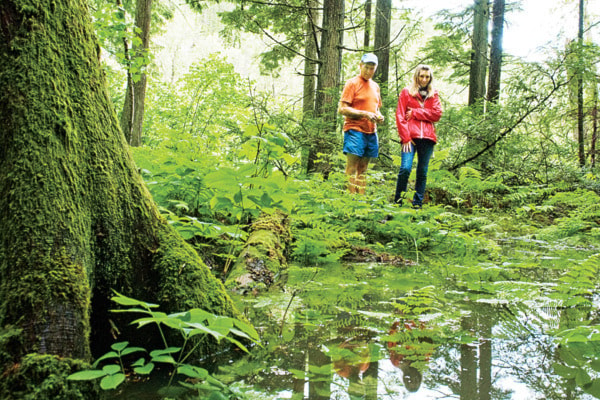There’s no need to drive to Banff or Jasper to hike when there are similarly breathtaking trails right here in the Shuswap.
John Coffey, a member of the Shuswap Trail Alliance, has been hiking throughout the Shuswap since the early ’70s and has shared some of his expeditions with fellow hikers who have marveled at what the area has to offer, while questioning the need to go anywhere else.
“There’s all this area north of here that’s called the Anstey Range – most people in Salmon Arm, the Shuswap and Sicamous, have no idea we have world-class mountain glaciers and hiking just north of here that’s easily as good as the Rockies,” says Coffey. “And I’ve taken people in and that’s been their comment; ‘Why do we travel to the Rockies when this is two hours away?’ And it’s right here and it’s spectacular.”
The Sicamous area alone is a wealth of unique trail systems that cater to a range of hiking expertise. One of the most accessible, Sicamous Creek, is a recently upgraded circle route that offers a brilliant view of Sicamous Creek Falls. Trail Alliance member Lori Schneider-Wood says she is amazed, to the point of being shocked, with how many of her fellow Sicamous residents who have never actually walked the simple trail.
“Even people who work with the district… Never heard of it, didn’t even know it existed,” says Wood. “And it’s two miles out of town.”
Other less-challenging trails include the Old Sicamous Highway, which makes its way down to the lake, the beautiful Gorge Creek Falls trail across from the Last Spike in Craigellachie, and the Eagle River Nature Park, where Coffey and Wood were hiking last week in search of botanical rarities – in particular, the Cascara tree, once highly sought after as a natural laxative.
Wood describes the park’s pathways as “10 kilometres of beautifully groomed, all-season trails.”
About to embark on a hike through Eagle River Nature Park with her daughters Angeline and baby Lucille, Justine Patrick says all the local trail systems are part of why she lives in Sicamous.
“I think our trails are vital to our ability to actually appreciate the Shuswap and the diversity here… They’re pretty essential,” says Patrick.
Not too far off from Eagle River is the Eagle Pass Mountain Trail, which Coffey calls the “best hike in the whole country,” with the remains of an old fire lookout up top.
“There’s a horse trail to it so it’s a moderate walk up to it and very few people have been there,” says Coffey.
The Shuswap Trail Alliance website lists 14 trails alone in the Sicamous area, though Coffey guesses there’s at least a couple dozen. And new ones are coming online, such as those within North Fork Wild, a 51-acre parcel of land in Electoral Area E Sicamous-Malakwa, donated by owner Peter Jennings to the Columbia Shuswap Regional District for parks and recreation.
Perhaps the most well-known trail in the area is the Larch Hills Traverse, which can be hiked, biked or skied from Salmon Arm to Sicamous. The trail was featured last year in BC Magazine, in which it was described as “22 kilometres of vintage trail, including the adrenaline surging downhill zigzag known as the Sicamous Switchbacks.” The magazine’s photographer, Patrick Halley, who was said to have biked many of the world’s top trails, called the switchbacks “one of the Seven Wonders of singletrack.”
Coffey and Wood both regularly lead hiking expeditions throughout the Shuswap, and welcome hikers who are new to the area to contact the trail alliance to find the hikes best suited to them.
For more information about trails in the Sicamous area or throughout the Shuswap, visit www.shuswaptrails.com.
